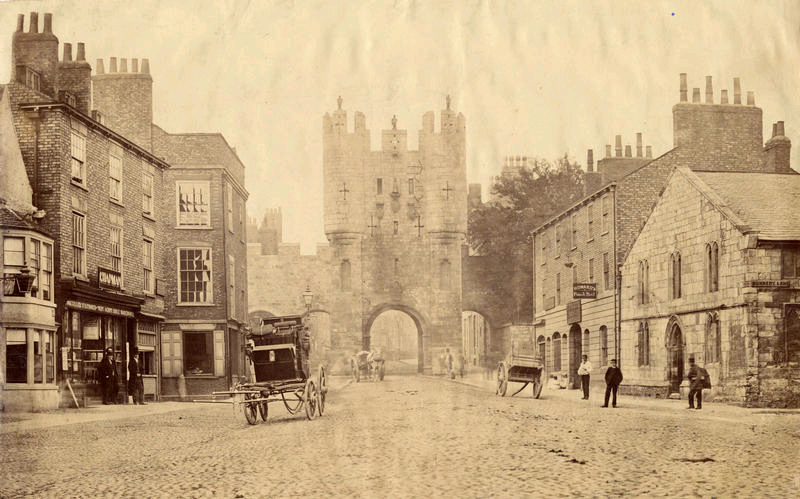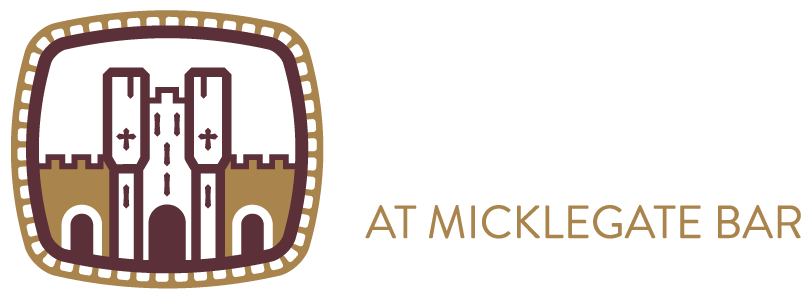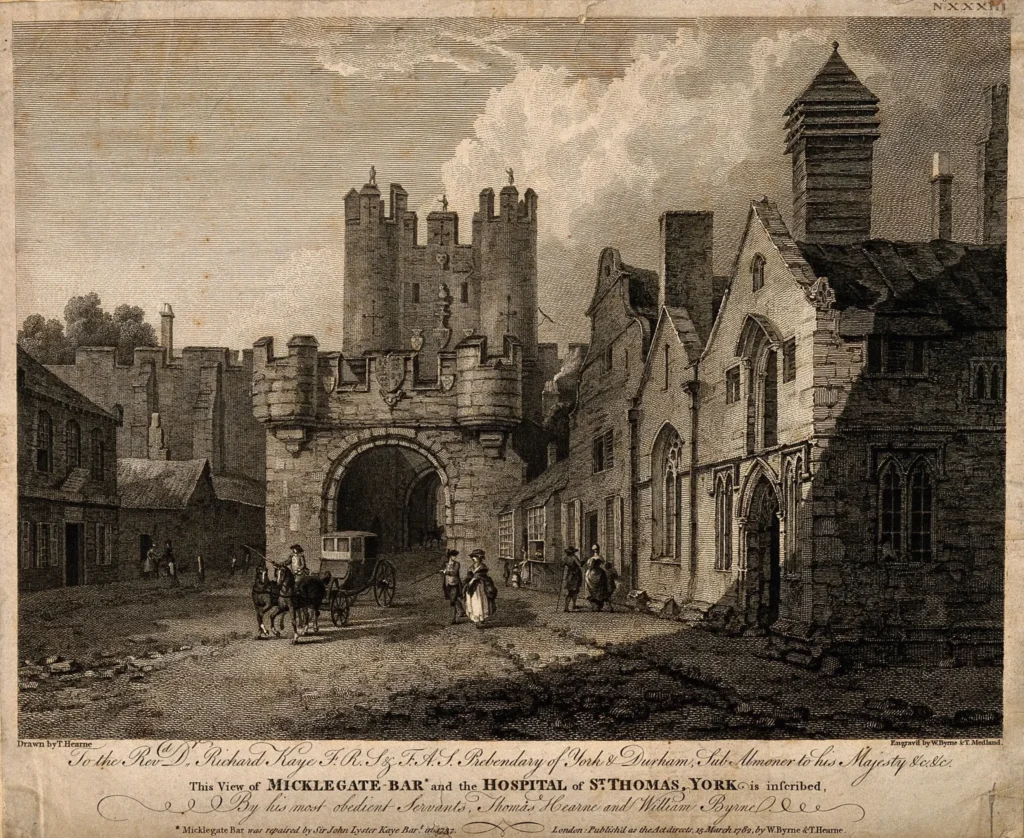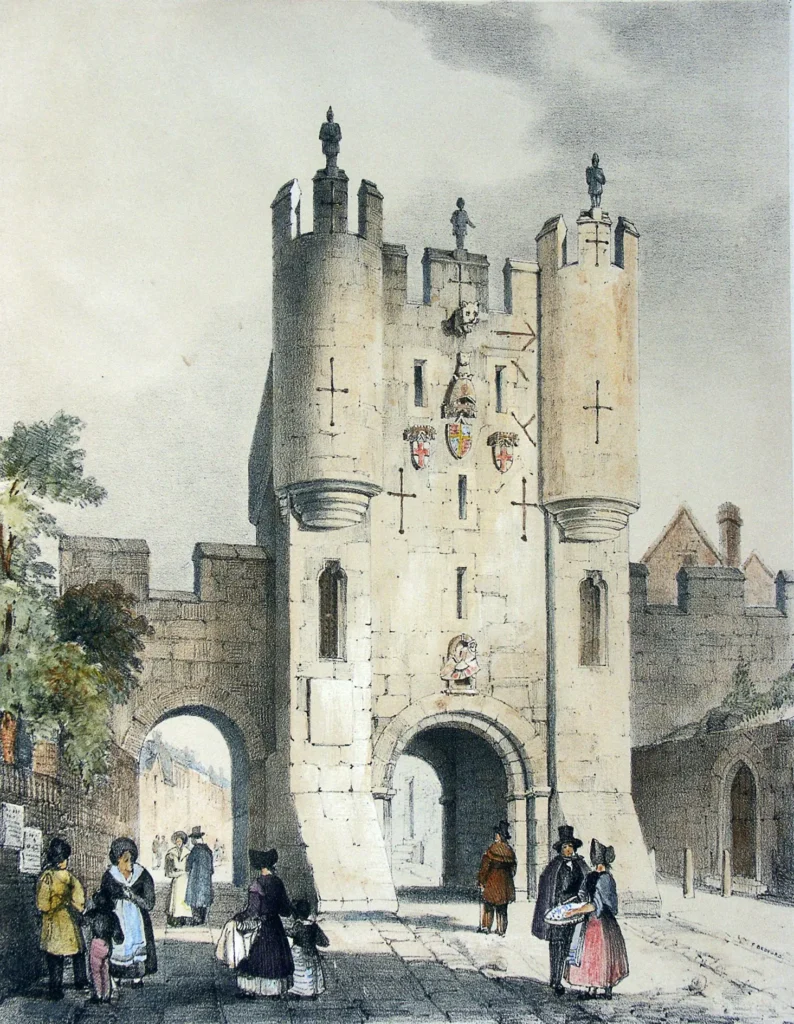What is Micklegate Bar?
Learn more about Micklegate Bar the home of the City Walls Experience
What is inside?
The City Walls Experience is the perfect introduction for anyone wishing to walk the length of this most complete of all English city walls. The exhibition tells the story of Micklegate Bar, complemented by artefacts found nearby and video presentations featuring characters from its past: Princess Margaret Tudor, Henry Slingsby the Royalist colonel, and PC Harry Sowden, one of the Bar’s last residents and a keen naturalist. Inside you will also find the remains of the Bar’s portcullis, broken up and reused as a room divider.
The top floor features a map of the walls, together with displays highlighting features from different periods in history that are still visible today, as well as those that have been lost to time. You can also see into the Bar’s tiny ‘bartizan’ towers, which in former times may have been put to use as temporary prison cells.
Over the last several hundred years, Micklegate Bar has served as a defensive gateway, a home, a prison, a focus for ritual and a tourist attraction. Its earliest parts probably date from the early 1100s, but its outer façade acquired its present shape in the mid 14th century, when the gate was heightened to house a portcullis. The Bar formerly had a barbican, a walled but roofless space in front, with walkways on top of its walls, but this was demolished in the early 19th century. A timber and plaster structure on the inner side added additional rooms in the late 16th century, but this was removed in 1827.
The Bar was the most important of York’s four principal gateways, giving access to those approaching the city from the direction of the Great North Road. It was also its most strongly fortified, although it has seen little action. Micklegate Bar has traditionally served as the ceremonial point of entry to York for royal visitors. It was also the point from which undesirables could be banished from the city, and was the last glimpse of York for condemned prisoners dragged from the castle to be executed at the Knavesmire. The heads and other body parts of infamous traitors have been displayed on top of the Bar at various points in history, and there are records of its use in 1729 as a temporary jail cell.
It was a dwelling-place until about 100 years ago; often several families occupied different chambers within the Bar simultaneously. It was also a point at which tolls could be levied on people and goods entering the city, and where inspections by the civic authorities took place prior to admission being granted.
Why is it Important?
Micklegate Bar remains a spectacular feature of York’s city walls, which are the completest of any English city. It has also witnessed key events in local and national history. Records of the welcome given here to ruling kings and queens, from medieval times to the present day, tell of lavish pageants and spectacles, with the Bar as a stage and a backdrop.
The Bar has also witnessed more gruesome sights. Harry Hotspur’s head was displayed on a spike there in 1403, as was that of Richard Duke of York (the father of King Richard III) in 1460. The heads of Catholic martyrs went on display in the 16th and 17th centuries; the last heads to be spiked at the Bar were of two Jacobite rebels in 1746. Dick Turpin passed through the gateway away from the city on his final journey to meet the hangman’s noose in 1739. When York’s Royalist defenders were finally defeated at the Battle of Marston Moor in 1644, it was at Micklegate Bar that the city was formally surrendered to the forces of Parliament, following a siege that had lasted for more than two months.

It has inspired writers and artists: Walter Scott was a passionate defender of the city walls at a time when they faced demolition by the city authorities, and an image of Micklegate Bar appears in the introduction in certain old editions of Ivanhoe (1819). The Bar also features in the Wilkie Collins thriller No Name (1862).



